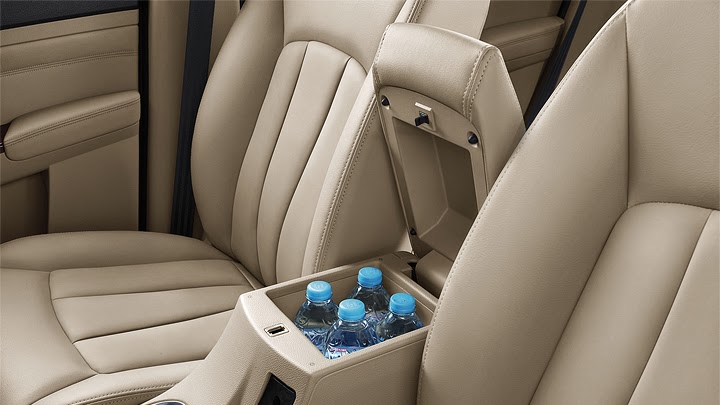
Eastern customers seem to make stronger divisions on what they want from automobiles. If it is a sporty coupé, there will be flashy colors, big spoilers and aggressive shapes. If it focuses on luxury, you will see classic lines, lots of chrome inserts and at least some hints of that limousine image of the 1980s. And when it is worried with the price, in turn, the results do not differ too much from Baojun’s latest gem. Since GM needed to put low cost as its top priority, the Brazilian Chevrolet Spin would still be “too upscale” for the task. So the company appears to have preferred start from what the Chinese were already selling: if you have seen 610 or 630, there will be no big surprises in this minivan.
The front fascia alone can make a great description of 730’s overall style: it is very discreet, rather than good or bad. There are some styling accessories, like chrome inserts, head and tail lights with complex internal design and lower sections covered with black plastic, but even Spin’s sheetmetal is way more elaborate. 730 is the kind of car whose appearance does not care for that “wow” element, which is so common among the newest products. But it also stays far from that excessively objective look that haunts most low-cost cars. Even among this type of vehicles, design is important because it is another way of attracting a customer (or not). So it would be wrong to make a car ugly just because it is intended to be cheap.










If 730 started to win you for its outside, entering it may make you want to travel to China right now. The 2.75-m wheelbase composes a very interesting cabin, whose occupants are accommodated as 2+2+3 – not only does the middle row gets much more transverse room, as the latter also works as a little “hallway”, giving easier access to the bottom seats. Besides the capability of taking up to seven adults, Baojun also claims a 330-L trunk even with all the seats up. Plus 22 storage compartments spread over the room. When it comes to comfort and safety, the suspensions were tuned by Lotus Engineering, the structure uses 50% of high-strength steel, and there are some new technologies in forming and welding.
Between standard and optional, the equipment list will include ABS brakes with EBD, four airbags, attachment points for child seats, cruise control, dual-zone climate control, heated seats, leather trim, navigation system, power steering and sunroof, reverse camera and an infotainment system with Bluetooth, HDMI and USB connections and a high-definition 8” touchscreen. The engine options will be a 112-hp 1.5L and a 143-hp 1.8L, both burning gasoline and paired to a five-speed manual transmission (with an optional four-speed automatic). Baojun 730 does not have an official release date yet, but it was already announced that it will start at RMB 69,800. There are no plans for it to leave the Chinese market.